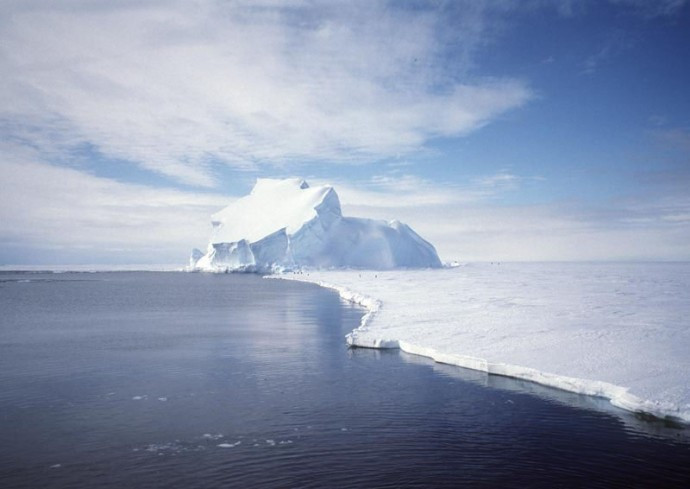Krypton Allows Scientists to Date Polar Ice Back to 1.5 Million Years

The age of polar ice going back as far as 1.5 million years can now be worked out thanks to a new dating technique using krypton.
Scientists have managed to successfully identify the age of 120,000 Antarctic ice using radiometric krypton dating, but there is huge potential to date far older samples, researchers from Oregon State University said.
Published in the Proceedings of the National Academy of Sciences, scientists say the ability to discover and accurately date ancient ice is critical to understanding our planet's history and the mechanisms that cause Earth to move in and out of ice ages.
Christo Buizert, lead author of the study, said: "The oldest ice found in drilled cores is around 800,000 years old and with this new technique we think we can look in other regions and successfully date polar ice back as far as 1.5 million years.
"That is very exciting because a lot of interesting things happened with Earth's climate prior to 800,000 years ago that we currently cannot study in the ice core record."
Krypton is produced by cosmic rays hitting Earth and then being stored in air bubbles within Antarctic Ice. It has a radioactive isotope called krypton-81 that decays very slowly, and a stable one, called krypton-83, that does not decay.
Scientists are able to compare the proportion of the stable to decaying isotopes to work out the age of the ice.

Krypton dating is similar to carbon dating in that it measures the decay of a radioactive isotope. However, krypton is a noble gas that does not interact chemically, while also being fairly stable for about 230,000 years.
Following a breakthrough in detector technology, krypton dating became feasible in 2011.
To work out the age of the Taylor Glacier in Antarctica, researchers looked at the isotope ratio then compared the results to ice core measurements of atmospheric oxygen and methane from that period.
The technology could now be used to work out if Earth shifted in and out of ice ages on a 40,000 year cycle before the Middle Pleistocene period. "Why was there a transition from a 40,000-year cycle to a 100,000-year cycle?" Buizert said.
"Some people believe a change in the level of atmospheric carbon dioxide may have played a role. That is one reason we are so anxious to find ice that will take us back further in time so we can further extend data on past carbon dioxide levels and test this hypothesis."
The authors will now look to find some of the oldest ice in Antarctica: "Most people assume that it's a question of just drilling deeper for ice cores, but it's not that simple," said study co-author Edward Brook, an Oregon State.
"Very old ice probably exists in small isolated patches at the base of the ice sheet that have not yet been identified, but in many places it has probably melted and flowed out into the ocean ... There are places where meteorites originating from Mars have been pushed out by glaciers and collect at the margins. Some have been on Earth for a million years or more, so the ice in these spots may be that old as well."
© Copyright IBTimes 2025. All rights reserved.






















